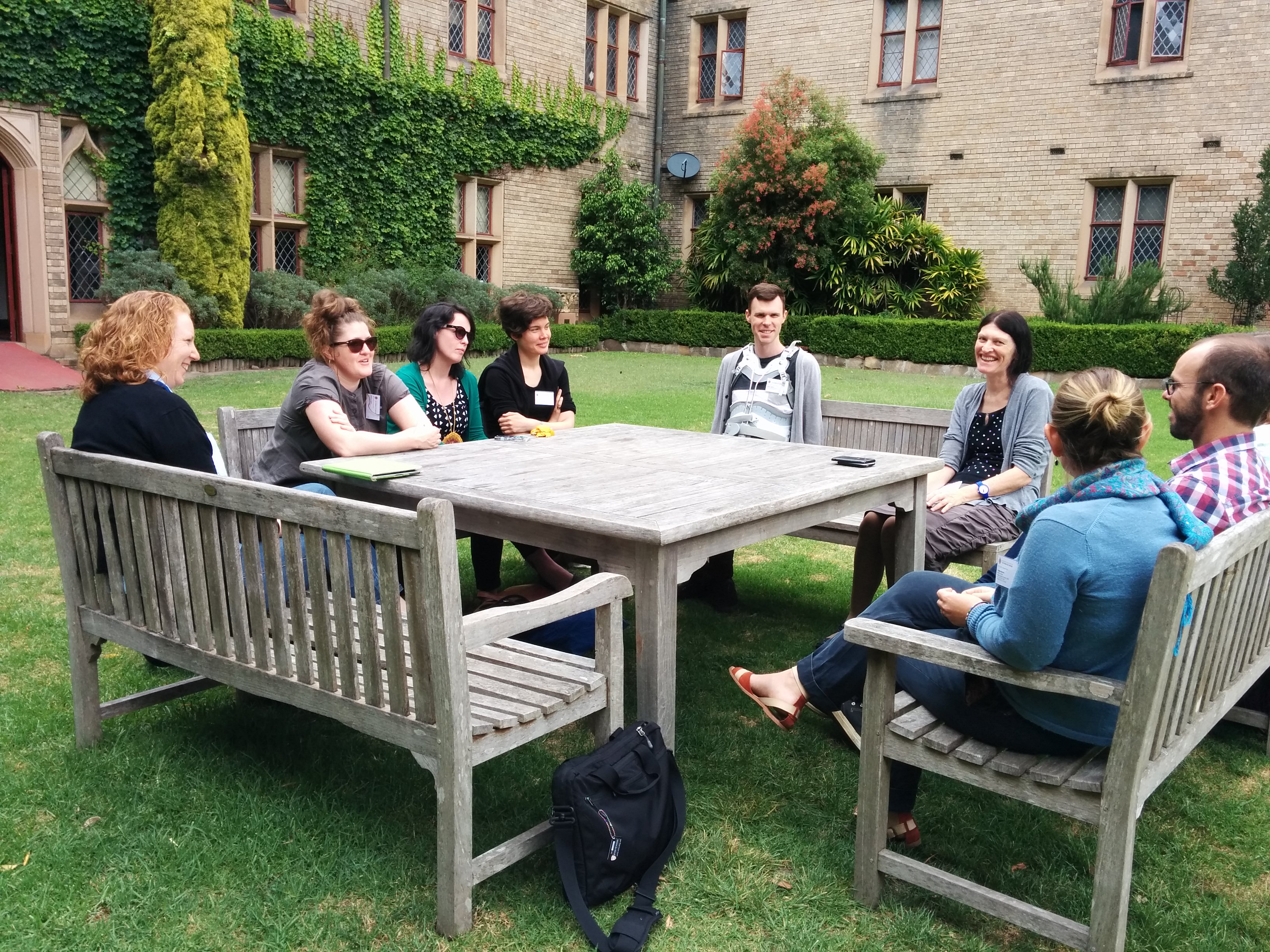
Stories from the next generation of language science researchers carrying forward CoEDL’s mission

CoEDL’s success would not have been possible without attracting the highest calibre postdoctoral researchers in the language sciences. Postdocs and early career researchers (ECRs) were the driving forces behind many CoEDL projects and required a diverse range of expertise — as well as considerable ambition and ingenuity — to do this work.
As a group, CoEDL’s 70 postdocs answered the Centre’s need for specialised skills across multiple areas including qualitative and quantitative research and experiment design; language description and documentation; bioinformatics; data processing and analysis; evolutionary theory; philosophy of biology and language; corpus building and analysis; and robotics and engineering. CoEDL entrusted its ECRs with responsibility for co-supervising PhD students, designing complex research projects, and pioneering the adaption of technology and development of new methods for studying language.
Through guidance and training from senior Centre members, including mentoring opportunities organised by the ECR and Higher Degree Researcher (HDR) Sub-committee, CoEDL postdocs developed experience in and respect for transdisciplinary, innovative and collaborative research. They were vital to the CoEDL community and the Centre’s mission to transform the science of language and will carry this mission forward with aplomb.

Hero image: Members of the Lopit community conduct recordings of their language; their efforts culminated in the opening of a library of Lopit texts, which you can read about here. Image: Rosey Billington/Jonathan Moodie.
Image 1: Rebecca Defina. Image: Rebecca Defina.
Image 2: Bruno Olsson. Image: Bruno Olsson.
Image 3: Laurence Bruggeman. Image: Laurence Bruggeman.
Image 4: Jacki Liddle (R) pictured with other members of the Florence team. Image: CoEDL.
Rebecca Defina [1] — Defina, Rebecca, Shanley Allen, Lucy Davidson, Birgit Hellwig, Barbara Kelly, and Evan Kidd, Sketch Acquisition Manual (SAM) Part 1: The sketch corpus. To appear in Language Documentation & Conservation Special Publication Child Language Documentation: The Acquisition Sketch Project edited by Birgit Hellwig, Shanley Allen, Lucy Davidson, Rebecca Defina, Barbara Kelly, and Evan Kidd
Rebecca Defina [2] — Defina, Rebecca, Shanley Allen, Lucy Davidson, Birgit Hellwig, Barbara Kelly, and Evan Kidd, Sketch Acquisition Manual (SAM) Part 2: The acquisition sketch. To appear in Language Documentation & Conservation Special Publication Child Language Documentation: The Acquisition Sketch Project edited by Birgit Hellwig, Shanley Allen, Lucy Davidson, Rebecca Defina, Barbara Kelly, and Evan Kidd
Rebecca Defina [3] — Wilmoth, Sasha, Rebecca Defina, & Debbie Loakes (2021). They Talk Mutumutu: Variable Elision of Tense Suffixes in Contemporary Pitjantjatjara. Languages, 6(2, 69). https://doi.org/10.3390/languages6020069
Rebecca Defina [4] — Minutjukur, Makinti, Katrina Tjitayi, Umatji Tjitayi, & Rebecca Defina (2019). Pitjantjatjara language change: Some observations and recommendations. Australian Aboriginal Studies, 2019, 82–91.
Rebecca Defina [5] — Defina, Rebecca (2020). Acquisition of Pitjantjatjara Clause Chains. Frontiers in Psychology, 11(541), 1–18. https://doi.org/10.3389/fpsyg.2020.00541
Bruno Olsson [6] — Olsson, Bruno. 2018. A Grammar of Coastal Marind. (Mouton Grammar Library 87). Berlin, Boston: De Gruyter Mouton.
Bruno Olsson [7] — Di Garbo, Francesca, Bruno Olsson & Bernhard Wälchli (eds.). 2019. Grammatical gender and linguistic complexity, 2 vols. (Studies in Diversity Linguistics 26–27). Berlin: Language Science Press.
Laurence Bruggeman [8] — Bruggeman, L., & Cutler, A. (2020). No L1 privilege in talker adaptation. Bilingualism: Language and Cognition, 23(3), 681-693. doi: 10.1017/S1366728919000646.
Laurence Bruggeman [9] — Bruggeman, L., Yu, J. & Cutler, A. (2022). Listener adjustment of stress cue use to fit language vocabulary structure. Proceedings of Speech Prosody 2022, 264-267, doi: 10.21437/SpeechProsody.2022-54.
Jacki Liddle [10] — https://www.youtube.com/watch?v=7gS6L9s8QUo&list=PLKB59ot0pqdX-oOzWrnD7r4BwBUvxPvtN